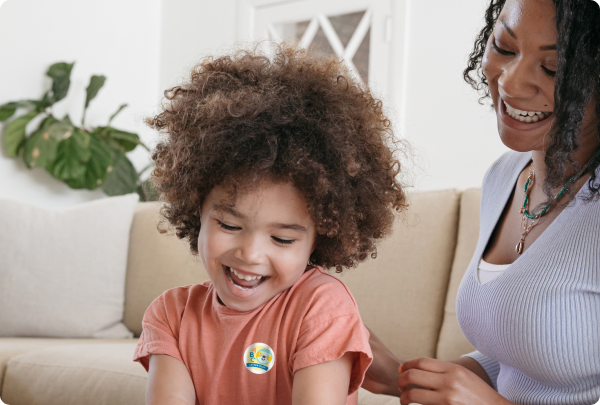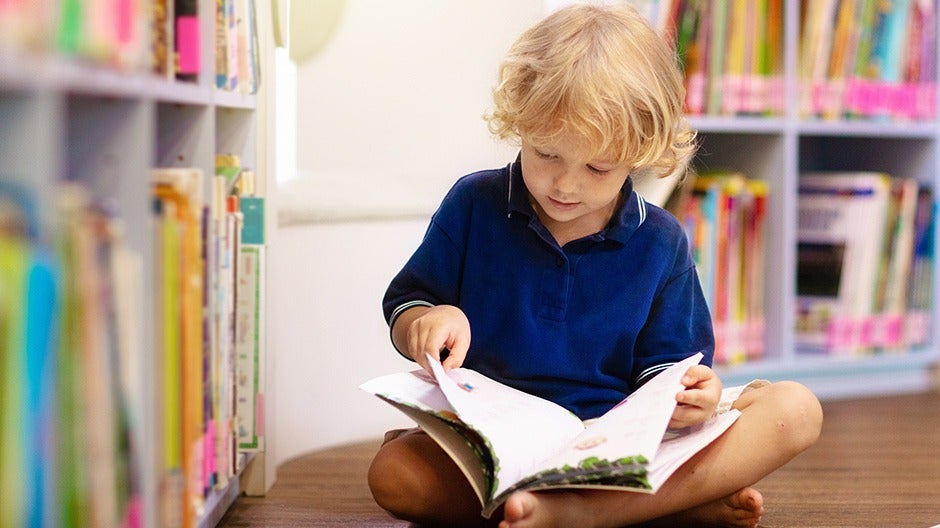And the skill is… Letter Play!
For this Skill Adventure, we’re working on the sights and sounds that make up letter play! Identifying letters by name and, even more essential, matching a sound to each letter are two crucial early steps on the road to reading.
Oftentimes, we think of recognizing the way letters look and sound as a skill that grows during storytime or with our interactive lessons. Don’t get us wrong, that’s an amazing way to practice! But letter play can go way beyond “The ABC Song!” In fact, you can incorporate it throughout your day, giving your Letter Liaison real-life opportunities to practice from A-Z.
Check out tips for implementing letter play into your child’s learning routine below!
Focused Learning Time (15 – 30 minutes)
Explore the HOMER practice area!
Ages 2-4:
- Try out games and lessons in the Letters section (anything!)
- Go to the Stories section and check out the ABC and 123 categories
Ages 5+:
- Try out games and lessons in the Sights Words and Practice section (anything!)
- Go to the Stories section and check out the ABC and 123 categories
Whole Body Movements (5 – 15 minutes)
Ages 2-3: Sing the ABC’s song while doing a specific movement: jumping, clapping, twirling, hopping, swimming, rolling!
Ages 3-4: Tape letters (in sequence) around a space to create an instant obstacle course. You can place the letters on the floor or wall, and on different levels. Challenge your child to find and touch/collect all of them as fast as they can!
Ages 5+: Try to sing the alphabet song while doing jumping jacks. If they’re already experts, sing it backward!
Fine Motor Activity (10 – 20 minutes)
Ages 2-3: Fill a plastic bin with kinetic sand and help your child trace letters! If you don’t have sand, use your favorite filler (yogurt, beans, etc.).
Ages 3-4: Get some play-doh and mold your own letters. You can also use alphabet cookie cutters (and save the cutters to bake cookies later!).
Ages 5+: Add some art to your child’s tracing practice! Have them paint a letter on a large piece of paper, then ask them to draw, paint, or cut and paste things that begin with the letter around it to create a beautiful alphabet art piece. They can start with the letters of their name, or just pick a random letter of the day!
Yoga or Stretching (10 – 20 minutes)
Ages 2-3: Do a simple yoga sequence while singing the ABCs.
Ages 3-5+: Try some mindful breathing with alphabet sounds. Ask your child to breathe in deeply. As they exhale, have them mimic the sound you make. Repeat with different sounds of the alphabet. Works best with sounds (Ahh, Sss, Zzz, Ooo, Mmmm).
Free Play (15 – 60 minutes)
Ages 2-3: Set up a series of toys/activities that start with the same letter (e.g. blocks, books, and bears) and invite your child to play. You can add some mystery by putting the object in a box with a top and label it with a giant letter. Encourage them to choose by naming the objects out loud.
Ages 3-4: Challenge your child to take photos of things that start with a particular letter of the alphabet. You can even extend the game by adding categories!
Ages 5+: Challenge your child to take photos of things that look like a letter, either outside in the yard or right in the house.
Reading/Story Time (15 – 30 minutes)
Ages 2-3: Read a story that highlights letter sounds (Dr. Suess’ ABC and the Amazing Alphabet book are both great for this!)
Ages 3-4: Read a story that highlights a specific sound. Anytime your child spots the letter, they can say that word in a funny way. (For example, if you’re reading a Peppa Pig book, every time you see the letter P, you say it with a loud pop.)
Ages 5+: Have fun with Mad Libs! Pick a letter, then fill in each blank with a word that begins with that letter and read your silly new story. If you don’t have Mad Libs handy, you can always make up your own!
Family Helping Time (10 – 20 minutes)
Ages 2-3: Sing the alphabet song together while you wash your hands, or (for a real challenge) while you brush your teeth!
Ages 3-5+: Play iSpy clean-up. Spy the item you want to clean up, then challenge your child to put it away as fast as they can. Give them the instruction by telling them the sound of the first letter of the object (for example, “I spy something that begins with the ssssss sound” socks!). Add additional clues if needed!
Making Memories (20 – 30 minutes)
Ages 2-4: Put a new spin on handprint art. Using 1 letter of the alphabet for each day, use finger paint to make a handprint on a piece of paper. Then draw, stencil, or paste a letter of the alphabet in the palm center. You can start with A and see how your hand grows or changes over the next 26 days. You can also do this with weeks!
Ages 5+: Create an acrostic of their memories of the day based on the letters in their name!
Snuggle Time (15 – 30 minutes)
Ages 2-4: Let your child pick a letter, and then draw that letter on their back, arm, or forehead.
Ages 5+: Build self-esteem and vocabulary at the same time by describing your child using words that begin with the letter of their choice (or start with the first letter of their name). For words they don’t know, tell them what it means, and how they embody that word.
Caregiver Gets Some Work Done Time! (30-60 Minutes)
Ages 2-3: Give them some letter coloring pages to decorate.
Ages 3-4: Watch a show with closed captioning/subtitles (and the sound) on.
Ages 5+: Set up some simple, letter-themed word search puzzles.













